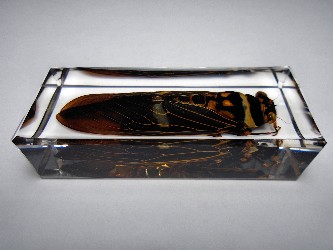
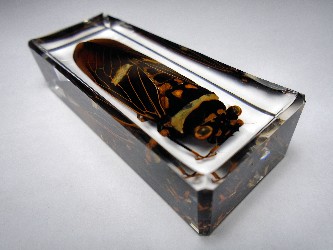
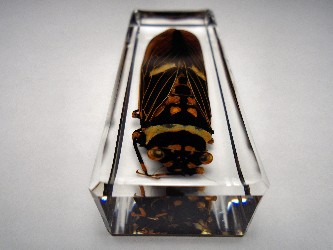
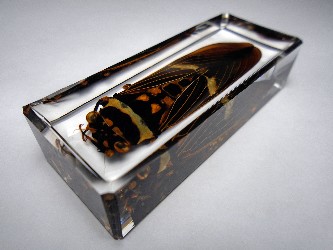
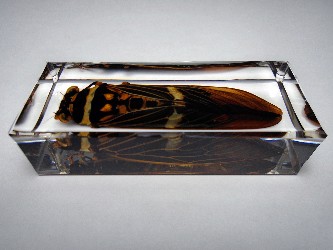
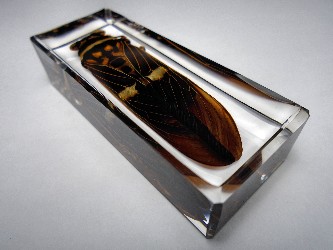
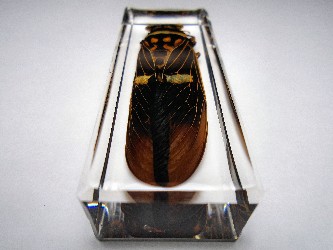
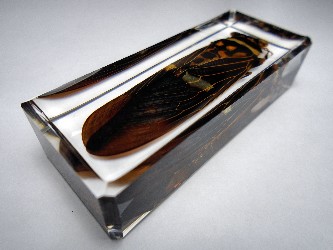
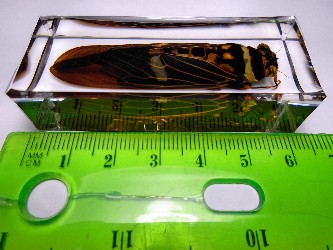
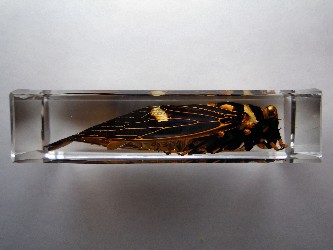
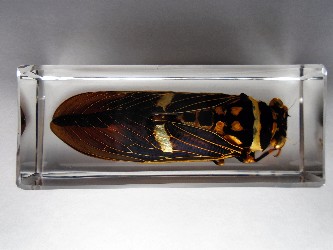
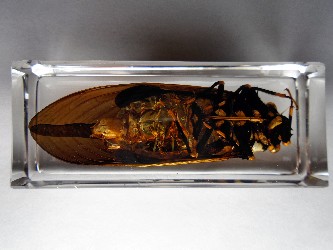
TOSENA MELANOPTERA CICADA Embedded in clear epoxy resin |
 |
 |
 |
 |
 |
 |
 |
 |
 |
 |
 |
 |
|
Overview of Cicada Morphology CLICK FOR DOWNLOAD PDF --------------------------------- Classification Phylum Arthropoda Class Insecta Order Hemiptera Family Cicadidae Subfamily Tibiceninae Tribe Tosenini Genus Tosena Species T.Melanoptera
.............................. The Cicada Wing MembraneMicro/Nano Structure  CLICK FOR DOWNLOAD PDF |
TOSENA MELANOPTERA Tosena melanoptera is a cicada species from Southeast Asia. It was described by White in 1846 from material collected in North India. It has also been recorded from Thailand and Vietnam. Cicadas are probably best known for their buzzing and clicking noises, which can be amplified by multitudes of insects into an overpowering hum. Males produce this species-specific noise with vibrating membranes on their abdomens. The sounds vary widely and some species are more musical than others. Though cicada noises may sound alike to humans, the insects use different calls to express alarm or attract mates. Cicadas are also famous for their penchant for disappearing entirely for many years, only to reappear in force at a regular interval. There are some 3,000 cicada species, but only some share this behavior (the 17-year cicada is an example). Others are called annuals because, although individuals have multi-year lifecycles, some adults appear every year. The dog day cicada, for example, emerges each year in mid-summer. When young cicada nymphs hatch from their eggs, they dig themselves into the ground to suck the liquids of plant roots. They spend several early life stages in these underground burrows before surfacing as adults. The process varies in length but often takes a number of years. Periodical cicadas do not create destructive plagues, as some locusts do, though tens or hundreds of thousands of insects may crowd into a single acre. Large swarms can overwhelm and damage young trees by feeding and laying eggs, but older trees usually escape without serious damage. Cicadas are members of the superfamily Cicadoidea and are physically distinguished by their stout bodies, broad heads, clear-membrane wings, and large compound eyes. The insect's amazing lifestyle has been a source of fascination since ancient times. Several cultures, such as the ancient Chinese, regarded these insects as powerful symbols of rebirth.
|